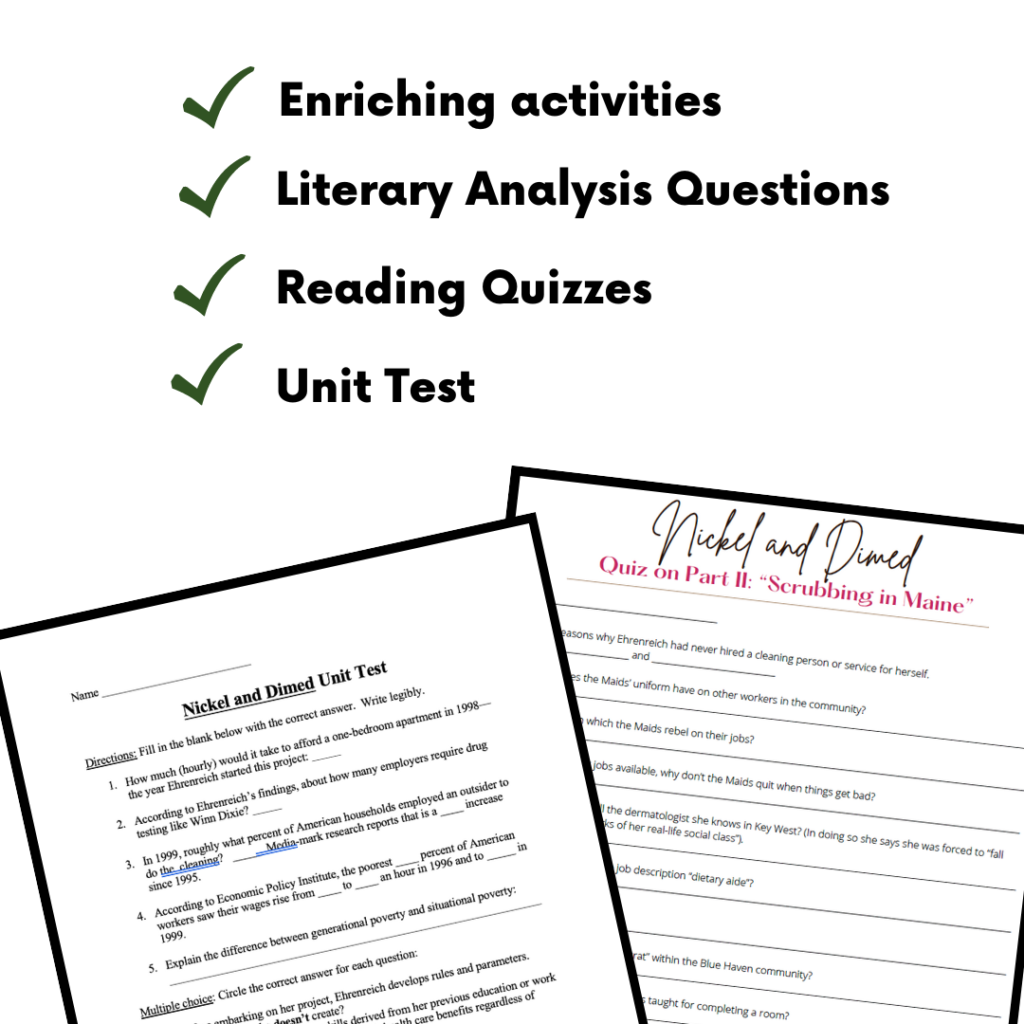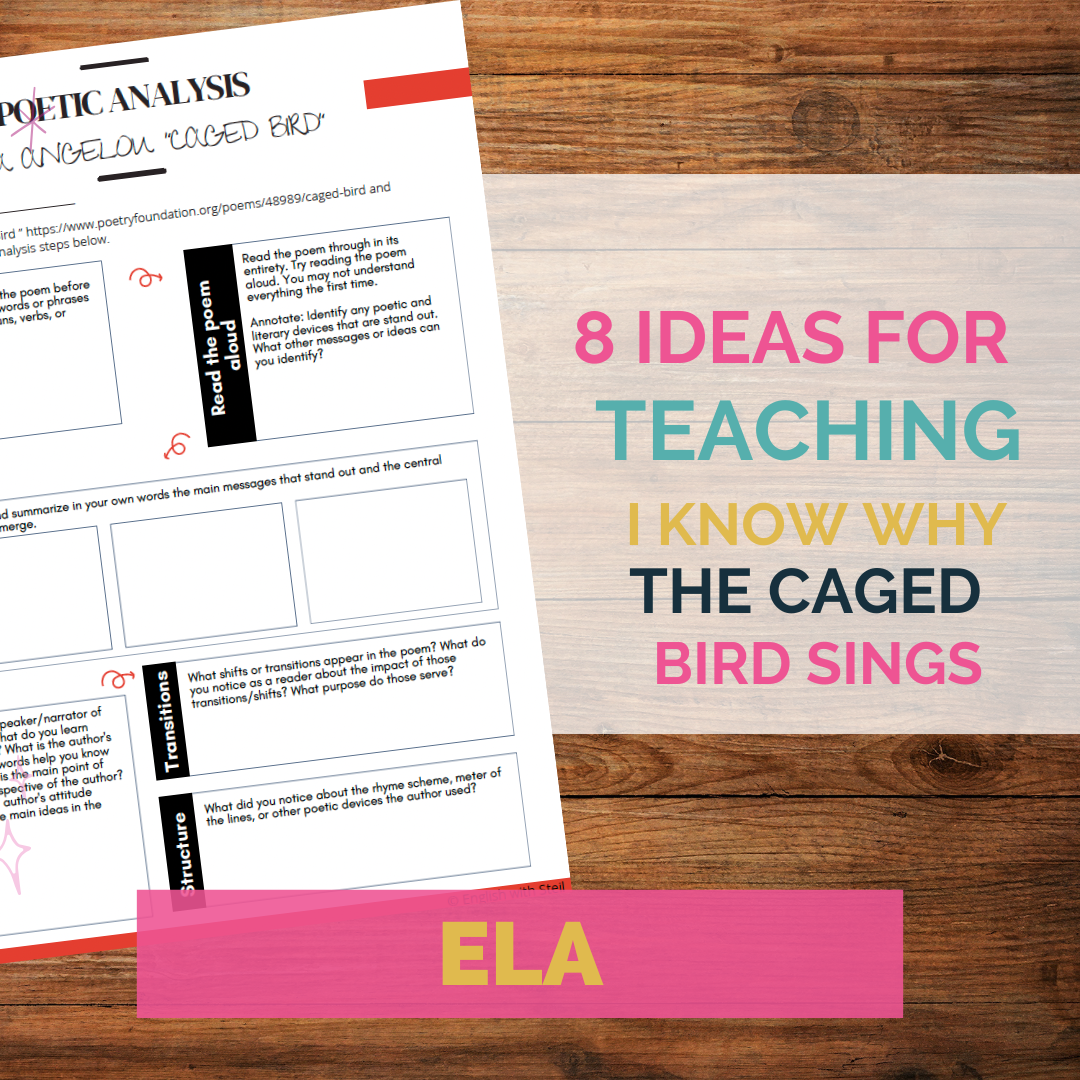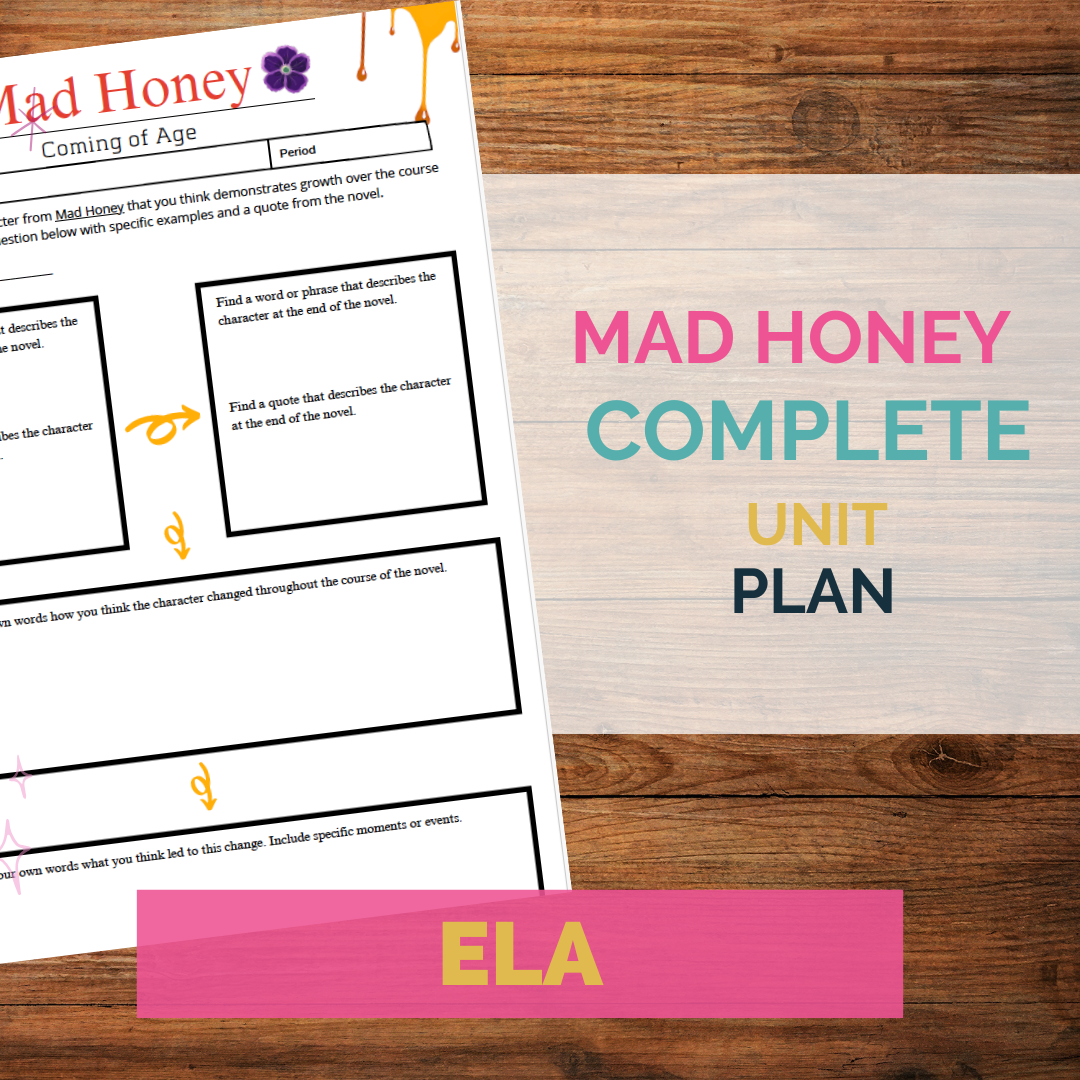Modern Day Connections!
My husband and I went out the other night for the first time in I don’t know how long! And when we sat down and started to order our food, they were nearly out of everything on the menu. You feel me, right? In fact, last night I sat down at a restaurant and waitress embarrassingly said, “Our chef is AWOL, can I offer you a drink instead?”
I don’t know about you, but I feel like everyone is feeling the strain of lack of employees. From school districts lacking subs and bus drivers, to the food industry short of staff, business owners are feeling the pinch. For over the 15 years, I have used Barbara Enrenreich’s Nickel and Dimed in my pre-AP Language Arts class and a part of literature circles in my Journalism class. During that time, I don’t think I’ve ever seen so many relevant and timely opportunities to talk about this text. Now more than ever, business owners are forced to content with figuring out why people don’t want to work for them. Is it working conditions, wages, hours, or something else?
Today, students are living these challenges in real time. Many have jobs in retail or food service, or they know someone juggling multiple low-paying jobs just to make ends meet. By connecting Ehrenreich’s experiences to their lives, Nickel and Dimed offers a powerful entry point for exploring systemic inequality, labor conditions, and the economic realities of millions of Americans. This book is more than a lesson in nonfiction writing—it’s a way to teach empathy, critical thinking, and the importance of understanding different perspectives in a world that’s increasingly divided.
For those of you who don’t know about Nickel and Dimed, pour yourselves a nice warm latte and cozy up because I know as soon as you are done, you are going to run out to the closest library and check out this book!
Key issues in Nickel and Dimed
We have all heard about Bernie Sander’s push this past year to increase the national minimum wage, but controversy around a minimum wage is not new. In the late 1990s, there was similar rhetoric around welfare reform and the fallacy that any job was the ticket to the American Dream. In responses to this public and political controversy, Ehrenreich decided she was going to spend slightly over a year living as an hourly wage employee.
Ehrenreich decided to see if it was truly possible to earn an hourly wage job, meet her expenses, and prosper to a better life. Throughout the course of the novel, Ehrenreich shares her grueling day-to-day experiences of working as a waitress, hotel maid, cleaning lady, a nursing health care home aid, and a Walmart Sales clerk.
Throughout the book, Ehrenreich covers everything from exposing hiring practices like large corporations requiring drug testing, the “special costs” that work against the poor, the nutritional impact of working class America, impact of unions, and more.
Reading about Ehrenreich’s experiences, some illegal and unethical, makes me cringe every time. Yet, there are always two sides to every story, and some critiques blast Ehrenreich for her one-sided approach to this text. I think this dual perspective makes for excellent talking points in my classroom. From minimum wage to the impact of Big Box stores, to the impact of corporate America on the working class, to the ability for everyone to truly achieve the American Dream, I find this book loaded with great nuggets to inspire discussion.
Readers follow her along her journey and learn the ups and downs (mostly downs) as she tries to support herself, while saving money and improving her life. In vivid detail, she weaves her narratives and details so readers get a glaring view of hourly-wage jobs. From the long hours, to the challenge of cleaning a house with only small amounts of water, readers learn how physically taxing and mentally exhausting these jobs are. And like Sanders says, one job may not be enough to make ends meet.
Key Themes for Today’s Classroom
Barbara Ehrenreich’s Nickel and Dimed is a vivid, often cringe-inducing account of her year-long experiment working low-wage jobs to see if she could survive and improve her life. She takes on roles as a waitress, hotel maid, cleaning lady, nursing aide, and Walmart sales clerk, shedding light on the physical, emotional, and financial tolls of low-wage labor. Along the way, she tackles systemic issues that are as relevant today as they were in the late 1990s:
- Hiring Practices: From drug testing to invasive interviews, she exposes the barriers that make it difficult for hourly workers to find and keep jobs.
- Economic Inequality: The “special costs” of being poor, such as lack of affordable housing or access to reliable transportation, trap workers in cycles of poverty.
- Corporate Practices: She critiques big-box stores and other large employers for exploitative wages and inadequate benefits.
- The Fallacy of the American Dream: Despite working hard, Ehrenreich’s experiences show that the promise of upward mobility remains out of reach for many.
Ehrenreich’s sharp, often sarcastic tone adds a level of relatability for students while also challenging them to consider the broader implications of her journey. And while the book is sometimes criticized for being one-sided, that very critique offers another layer for classroom discussion: What voices are missing? What could employers or corporations say to counter her claims? These dual perspectives enrich the conversation and make Nickel and Dimed a dynamic text for critical thinking.
Dynamic Resources to Enrich Your Teaching
To make the most of Nickel and Dimed in the classroom, I’ve developed a comprehensive 4-5 week unit plan filled with engaging resources and activities. Whether you’re teaching AP Language, Journalism, or an introductory English course, this unit is flexible and easy to adapt. Here’s a breakdown of what it includes:
- Pre-Reading Activities: Start with a presentation on poverty in America and the challenges of low-wage work. This sets the stage for students to contextualize Ehrenreich’s experiment and connect it to their own communities.
- Literary Analysis Questions: Over 96 open-ended questions guide students through the text, focusing on key themes, figurative language, and textual evidence. These questions encourage students to think critically and cite specific examples to support their answers.
- Interactive Discussions: Use the questions to fuel Socratic seminars, literature circles, or small group discussions. These formats allow students to debate and collaborate, building a deeper understanding of the material.
- Multimedia Comparisons: Films like The Pursuit of Happyness (starring Will Smith) and the Frontlinedocumentary Is Walmart Good for America? help students draw parallels between Ehrenreich’s experiences and contemporary issues. While these films are slightly dated, they provide excellent starting points for discussions on corporate responsibility, wages, and the American Dream.
- Assessments: Formative reading quizzes, a comprehensive unit test, and a final project ensure students are engaging with the material and synthesizing their learning.
Teaching Nickel And Dimed
When I teach Nickel and Dimed, I use resources in each of the following different areas:
- Pre-reading presentation on poverty
- Small and large group literary analysis questions
- Reading quizzes for each of the three parts of the novel
- Films to provide comparison and background
- A comprehensive unit test
My literary analysis questions contain over 96 open ended questions for students to engage in as they read the novel. Each of the questions includes textual references and direct quotes from the text to help students understand the key issues, themes, and ideas presented in a novel.
In addition, the literary analysis questions include figurative language strategies to help students understand specific uses of language and syntax as they read the text.
If students respond, they are encouraged to cite evidence from the novel to demonstrate their understanding. These questions can be used in a variety of ways:
- prep for literature circles
- Socratic seminar discussion
- individual or small groups, or whole class guide and discussion.
A couple times during the unit, I use films to help students make connections between the issues and ideas that arise in Nickel and Dimed and modern day issues. One of the films I showed near the beginning of the unit is the Frontline documentary on Walmart “Is Walmart good for America?”. Keep in mind this film is a bit dated, but it does bring up good debatable questions for students about the impact of “the big box stores” and its impact on small-town America. It also brings up questions about treatment of employees, compensation, and workplace environment. It forces kids to think about their own employment, or employment of people they know, and making connections to Ehrenerich’s experiences in the novel.
Another film I include is called Pursuit of Happyness with Will Smith. Again this film is a little bit dated, but it helps students make connections between two works. In the film pursuit of happiness, Will Smith has been dealt a tough hand in life, and is trying to achieve the American dream. This viewing guide pushes students beyond simply comprehending; it encourages students to critically evaluatetopics and themes that appear in both works: poverty, minimum wage, the American Dream, and overcoming obstacles. All questions are formatted as open-ended prompts to allow for deeper thinking, while keeping students engaged and accountable during the film.
Finally I incorporate some opportunities for check-in‘s with students using formative assessments like reading quizzes and a summative unit test. Collectively, these resources help students work through this nonfiction piece.
Final Thoughts
Teaching Nickel and Dimed isn’t just about understanding a book—it’s about equipping students with the tools to critically analyze the social and economic structures that shape their world. In a time when labor shortages, wage debates, and economic inequality dominate headlines, Ehrenreich’s journey resonates more deeply than ever. By connecting her experiences to modern-day issues, you’re not only engaging students in meaningful discussions but also helping them develop empathy, critical thinking, and a sense of responsibility as future decision-makers.
This unit plan gives you everything you need to turn Nickel and Dimed into a transformative learning experience, from literary analysis to real-world applications. With thoughtful discussions, engaging multimedia resources, and practical assessments, you’ll empower your students to think beyond the classroom and challenge the status quo. Together, you’ll unpack the complexities of the American Dream and explore what it truly takes to achieve it in today’s world.
Ready to make a difference? Dive into this timeless text and watch your students uncover the power of nonfiction to change minds, spark conversations, and inspire action.








